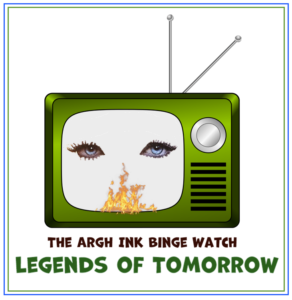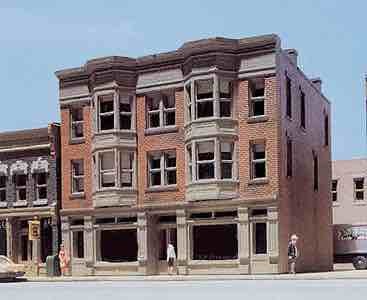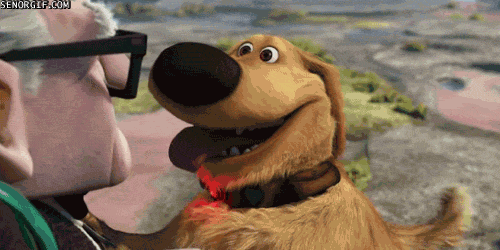Jennifer Crusie's Blog, page 216
February 3, 2017
Legends of Tomorrow Binge Watch: Episodes 2-9 & 2-10 : “Legends of the Lost Art’ and “The Legion of Doom” and What the Hell Storytelling
 Since this appears to be Go For Broke week here on Argh Craft, it’s a good time to go back to Legends of Tomorrow because in its new insane season, the writers have been consistently saying, “What the hell, let’s do THIS” and just hitting the show out of the SF/comic book show park. This show was once consistently rated the worst of the Arrowverse–Arrow, The Flash, Legends, and this year Supergirl–and now it’s more often than not rated the best. That is entirely due to the writers room stocking a lot of good weed or just deciding that if it feels good, they should write it. I don’t think I’ve ever had so much fun with Dumb TV. If they bring back Snart, this will be my favorite show. Oh, hell, it’s my favorite show now, but bring back Snart anyway.
Since this appears to be Go For Broke week here on Argh Craft, it’s a good time to go back to Legends of Tomorrow because in its new insane season, the writers have been consistently saying, “What the hell, let’s do THIS” and just hitting the show out of the SF/comic book show park. This show was once consistently rated the worst of the Arrowverse–Arrow, The Flash, Legends, and this year Supergirl–and now it’s more often than not rated the best. That is entirely due to the writers room stocking a lot of good weed or just deciding that if it feels good, they should write it. I don’t think I’ve ever had so much fun with Dumb TV. If they bring back Snart, this will be my favorite show. Oh, hell, it’s my favorite show now, but bring back Snart anyway.
Where was I? Right. The pleasures of watching a show (or reading a story) where the writer says, “What the hell, why not?” They are many.

Let’s start with 2-9 “Legends of the Lost Art.”
(We’re skipping episodes seven and eight, but they were immense fun: seven was “Invasion,” the Flash, Arrow, Legends crossover, and eight was “The Chicago Way” with Eliot Ness and Al Capone, all being used by the Legion of Doom, which is Eobard Thawne and his two henchmen, Damian Dahrk and Malcolm Merlin. Good Times.)
As you may remember from my rantings from Season One, two of the worst things about this show were Rip Hunter, Worst Team Leader Ever, and Vandal Savage, Worst Antagonist Ever. (There were also the Hawks, but they’re gone, so enough about them.) Savage is also gone forever, killed three times, but not forgotten in this episode, and Rip’s been missing all season, so that was lovely, but in this episode Rip’s back.
Kind of.
See, Rip knew he had the Spear of Destiny in his underwear drawer and the only way to keep it safe from the Legion of Doom was to hide it and then wipe his memory so he was no longer Rip Hunter.
Let us take a moment to look at the genius of that bit of writing. You have a character who is just an annoying putz, despite the charm of its actor. So you wipe the putz’s memory, and give the actor a role to play that he is going to grab onto with both hands and run like hell with. After loathing Rip Hunter in every appearance he made in spite of being a fan of Arthur Darvill, the actor who played him, I watched him come back in this episode and he’s marvelous. Of course he doesn’t know he’s Rip Hunter. He thinks he’s an American movie director named Phil in 1967. Oh, and he also has a prop guy named George to whom he gave the Spear of Destiny because since his memory was wiped, he doesn’t know what it is. (It’s the spear that pierced Christ’s side during the crucifixion and now it can rewrite reality. Just go with it, okay?) This lack of forward thinking would be annoying–Rip Hunter, Worst Team Leader Ever–except it’s completely in character and Rip’s pretty much gone. Phil, however, is all over the place, funny as hell, the best thing I’ve seen Arthur Darvill do since Doctor Who. Honestly, watching this episode is worth it just to see Darvill nail an American accent and then freak out repeatedly as he’s attacked by otherworldly beings while trying to shoot a movie about a group of time travelers who are threatened by a mustachioed villain who’s really bad. Or as Phil says, “I can’t seem to get Peter to bring any menace to the part . . . . A film is only as good as its villain, and I have an antagonist who is as threatening as a weiner dog.” Then Dahrk and Merlyn show up and are snide and Phil says, “You see, this is what I’m talking about. These guys are good.” If they hung any bigger lampshade on last season’s problem, it’d be a chandelier. Then the cops show up and arrest Phil/Rip, who starts to scream. I LOVE PHIL.
So far, it’s just fun. But then it gets interesting because Ray and Nate start to get dumber. And it turns out that the reason that Ray became a genius scientist was that he saw Star Wars and it changed his life. And Nate became a historian because he saw Raiders of the Lost Ark and it changed his life. And that prop guy name George? That was George Lucas who was so terrified by the laser fire in the kidnapping attempt that he left film school and never made those movies. So now they not only have to save Phil/Rip, they have to talk George Lucas back into film school or Ray and Nate will be goobers and no good to the team. Also, George thought the Spear of Destiny was just junk, so he put it in the trash. Which leads to a scene of three guys and a cranky, pro-active girl in a trash compactor.
There’s a subplot of Mick forcing Stein to be a psychoanalyst/brain surgeon to get rid of his visions of Snart, also fun–Sara, seeing Stein poised with a scapel over Mick’s bald head: “What are you doing?” Stein: “Brain Surgery.” Sara: Shrugs and goes to save Phil–although whether Snart is a hallucination or something more real is still up for consideration. But the real fun here is the writers pretty much ripping up the last season and saying “Hey, it’s a whole new story,” and the Legion trying to outsmart Merlyn and Dahrk, who are not only lethal but also masters of snark. Even five seconds of the two of them just standing in an elevator is good entertainment. Sara is a badass leader, the team works together well while bitching at each other, the antagonists are awesome, and all of it is absolutely, wonderfully ridiculous. The scene where they find George Lucas in a parking lot and Nate jabs a finger at him and says, “Stay in school!” is just one of dozens of great moments. Amaya saying, “You’re our only hope,” is good, too. And then there’s Sara saying, “Oh, great. George Lucas has the Spear of Destiny.” And it all ends with a great reversal. The writers are just on fire.
Which bring us to, “The Legion of Doom.”

This season, the voiceovers at the beginning rotate among the Legend team members. Except for this episode. For this episode Damian Dahrk takes over the voiceover, which is a appropriate because the Legion of Doom takes over the episode. If this season has a protagonist team that’s fully bonded, it also has a three-man antagonist who are at each other’s throats, arguing about how best to get information out of the newly kidnapped Phil (Arthur Darvill continues to be brilliant). Merlyn and Dahrk are particularly wonderful together, sniping at each other like buddy cops. Why are they together? Because they all want to change their realities: Merlyn would like his arm back, Darhk would like not to die in 2016 at the hands of the Green Arrow, and Thawne . . . actually nobody knows what Thawne’s up to, so that’s what this episode is all about. Merlyn asks why Thawne disappears so often and Thawne takes it badly, grabbing him by the throat and asking why he should leave him alive. “Because you need me,” Merlyn says, uncowed. “In the League of Assassins, they called me the Magician.” Darhk rolls his eyes. Really, I’d watch the Merlyn and Darhk show just to see these two play off each other: John Barrowman and Neil McDonough are veteran actors who make it look easy and who obviously are having the best time ever with the writing in this story. So many great moments, but possibly the best line is Thawne explaining why they’re going to beat the Legends: “Because they’re idiots.”
The Legends are pretty much sidelined in the episode, which is okay because the Legion is great, bickering among themselves, terrorizing Phil, and finally discovering why Thawne’s so uptight all the time, ending with another major reversal as they mess with Rip’s brain to give him back his memories plus a side order of villainy so that he goes back in time and kills George Washington. Well, you had to be there.
Bottom Line: I’ve never seen a show this insanely willing to say, “What the hell,” and just go for it, and I’m enjoying every minute of it.
How I’d Fix This:
I would not touch a thing.
What I Learned From This:
Once you have a clear protagonist and a clear antagonist, in this case, two teams, and you’ve established wonderfully individual characters within those two groups, you can pretty much swing as wide as you want. The characters will keep people reading even as reality goes spiraling out of control. As long as the internal consistency of the story and its characters is stable, you can do anything. Like give George Lucas the Spear of Destiny in a trash compactor.
Now all they have to do is bring back Snart . . .
The post Legends of Tomorrow Binge Watch: Episodes 2-9 & 2-10 : “Legends of the Lost Art’ and “The Legion of Doom” and What the Hell Storytelling appeared first on Argh Ink.

January 30, 2017
It’s All in the Reflexes
I’ve been reading The Official Making of Big Trouble in Little China and finding it tremendously comforting. I bought the book because it’s about my favorite movie of all time, but I’m finding it comforting because it’s reminding me to swing as wide as I can while telling the best story I can, and then let go and let the Girls in the Basement take it from there.

Reading through the different interviews, I started to make connections between my book and John Carpenter’s story. They were there already–the best dish at the Chinese restaurant next door to the bar is Eggs Shen and then there’s the Six Demon Box–but remembering the movie in detail made me realize that so many of the things I loved about it were things I’ve been trying to avoid in the book. Like the way the movie wholeheartedly embraces the completely batshit insanity of the story. There’s no place where Carpenter steps back and says, “Well, wait, let’s get a grip here.” Instead, it’s all in the reflexes.
So I love it that the hero of the movie, Jack Burton, is actually the clueless comic relief sidekick to the real hero, Wang Chi. I love it that the heroine, Gracie Law, is a kickass, smart-mouthed lawyer who is such a force of nature that Jack walks away from her in the end without kissing her because he knows he can’t handle her. I love it that Jack is over his head from the beginning–“I’m a reasonable guy. But, I’ve just experienced some very unreasonable things”–and just goes with it. I love how the movie just gets crazier and crazier and it doesn’t matter because Our Team–Wang Chi, Jack Burton, Gracie Law, Egg Shen, Margo Litzenberger, Eddie Lee–are goin’ into the Wing Kong Trading Company to rescue Mao Yin, and not even the Three Storms, the Sewer Demon, and the Wild Man monster are going to stop them. I love it that Gracie leaves a lipstick print on Jack when she kisses him and Jack doesn’t know it. I love it that Wang Chi wiggles his eyebrows before he takes out one of the Storms. I love it that Jack fires off his gun above his like a macho hero and brings down the ceiling on himself. I love Gracie Law kicking the bad guy off the stage, and the gang in the elevator feeling kind of invincible, and I love Jack missing LoPan when he throws the knife at him at the end, and LoPan catching it and throwing it back and how that plays out. I love this freaking movie more than any other I’ve ever watched, and I think it’s because it just doesn’t give a damn whether you like it or not, it’s gonna go over here and do this demented and delightful thing. It’s everything I’ve ever wanted in my own writing.
I had that in the beginning because I didn’t know anything about the romance genre. I knew I loved Georgette Heyer, but I’d never read a Harlequin, never talked about romance online, never really understood that the genre was more than the whole bodice ripper thing. I wanted to write mysteries, but my brain didn’t work that way, so I tried romance. Stuff happened and I sold a book to Harlequin, not realizing that my editor was taking a big chance on the book. She told me later that the day the book came out, she went into her office and shut the door and put her head down on her desk because she was sure her career was over. At the next editorial meeting, the senior editor said, “We’ve received thirty letters about Manhunting,” and she thought, That’s it, I’m fired, except they were all good letters, asking for more stories like that one. She knew we were crossing a line, I didn’t. That’s why I could cross it. I couldn’t see the damn line.
Starting like that gave me permission to cross the line again, helped by the fact that the line moved and romance became a much more open genre. But I’ve also gotten clobbered for going over the edge, and the more success I’ve had, the harder it’s been to trust my reflexes. It’s ironic: success makes you doubt yourself. Should I be doing this? This is going to annoy a lot of people, disappoint a lot more who are still hoping for Bet Me Again. What the hell am I thinking?
But that misses the point. I’ve been writing for almost thirty years, I have a lot of the basics pretty much down now so that I can fix damn near anything in a rewrite. What I can’t fix is the spark that a good story needs, that excitement under the surface, that sense that there’s a wild ride coming at you. Writing batshit insane stories can be terrible without craft and skill, but writing with only craft and skill can result in terrible stories, too. I need to embrace Jack Burton’s philosophy: “Like I told my last wife, I says, “Honey, I never drive faster than I can see. Besides that, it’s all in the reflexes.” I can see pretty far, and the farther I go in a story, the more I see. So now . . .
I’m thinking that the batshit stuff I’ve been avoiding is the story I want to tell. I’m thinking about the first time Jack Burton throws that knife and because he’s overthinking it, he misses. I’m thinking about the last time Jack Burton throws that knife. I’m thinking it’s all in the reflexes.
Damn, I love that movie.
The post It’s All in the Reflexes appeared first on Argh Ink.

January 29, 2017
In Praise of Lawyers
If you know a lawyer who rushed to an airport near you to help those Steve Bannon decided did not belong in a country they had a legal right to enter, give him or her a big kiss from me. This is insanely wrong.
And please, give to the ACLU, please. They were always important but now they’re crucial.
[image error]
Now would also be a good time to contact your reps in Congress and suggest that you’d like a government that’s not unAmerican. Find your House rep here. Find your senator here. E-mails are evidently being ignored, so it’s back to snail mail. Bury them in it.
I had a much longer post here, but it was angry and not helpful. Action is helpful. Participation is essential. And supporting the organizations that defend our constitution and everything it means to be America is crucial. If our government won’t defend the ideals that make us who we are, we must.
The post In Praise of Lawyers appeared first on Argh Ink.

January 28, 2017
Cherry Saturday 1-28-2017
Today is Blueberry Pancake Day.

It was either that or Kazoo Appreciation. I appreciate blueberry pancakes more.
The post Cherry Saturday 1-28-2017 appeared first on Argh Ink.

January 25, 2017
Expectation and Reversal: A Video Explanation
We’ve talked about setting up expectations and then reversing them in a way that makes the reader/viewer see things in a different way so they feel engaged and delighted instead of swindled (the infamous Gotcha). I love this video because it’s a great short visual for that concept:
My fave is the lightbulb that lights up instead of breaking; not just a reversal but a delightful surprise.
The post Expectation and Reversal: A Video Explanation appeared first on Argh Ink.

January 24, 2017
Setting and Placeholders
Sooner or later, I need pictures of my settings. This can be difficult because I’m making stuff up, so I end up doing really sloppy photoshop work. As with all the collages I use, the setting pictures aren’t art work, they’re brainstorming exercises (while I’m working on them) and touchstones (while I’m writing.) The best thing about them is the process: searching for things that feel like the setting (instead of look like the setting), thinking about what the picture needs, the details that my characters would see, the way the environment around it looks . . . all of that helps me get past “It’s a bar on a rainy cobblestone street.”
The book got far enough this week that I really needed the exterior of Hell Bar.
So here’s what I knew:
• It was in an old part of Deville, built in the 1800s.
• It was formerly Mammon’s townhouse.
• It’s original front windows were large and heavily paned.
• It was two stories, except then I realized after an image search that there weren’t many two story townhouses in the nineteenth centure so now it’s three which works better anyway.
• It was divided into the bar and Sandy’s diner.
• Mr. Shen’s Chinese take-out is on the other side of the bar.
• The street is cobblestone.
• The streetlights are reproduction.
So first I had to find a basic street photo from the 19th century. I went with this one:

This had a lot of things going for it. The street and sky were mostly empty. It had big windows in front. There was a storefront next to it that could be Mr. Shen’s. The only things I did to this image were to blank into a solid color the street, the sky, and the two big front windows. Drawbacks: the bay windows which were not part of the images I’d already done for Nick’s apartment, and the third story. But the third story actually solved a problem I had (where are Dag and Rab sleeping?) and I can fudge the bay windows in my brain, so I was good to go.
Then there were the details like shop signs and windowpanes. Again, this is not an art work, I’m not trying to fool anybody, I just needed an idea of what it would look like. Also I learned that the door to Sandy’s diner is actually double doors, the original front entrance to the house, and that the bar door is a retrofitted side window.

The next pass took out the sky entirely and added a cobblestone street and streetlights:

And then all I had to do was find a good moody sky to put behind everything:

And from much earlier last year, here’s the front room of Nick’s apartment over the bar (imagine that front window is a bay because I am):

These are, of course, terrible photo-shops, but they’re great placeholders for Nita’s book.
And now, back to writing.
APOLOGY: Because I am only half awake, I hit “publish” before this post was done which means that anybody on an e-mail subscription got half a post. REALLY SORRY ABOUT THAT.
The post Setting and Placeholders appeared first on Argh Ink.

January 22, 2017
How Krissie Spent Saturday
In the wilds of Vermont . . .

One of the many reasons why she’s my BFF.
And more great signs here. Some of the best were in London: “I am very upset.” “I’m really quite cross.” “This is very bad.” And the ones with kids, like “If you build a wall, my generation will tear it down.” The one that finally made me cry was “First they came for the Muslims, and We Said, Not This Time Motherfucker!” Okay, THIS is my America.
God, Donald Trump must be having an awful weekend.
And that great Carrie Fisher graphic by Hayley Gilmore is free to download here.
The post How Krissie Spent Saturday appeared first on Argh Ink.

January 21, 2017
A Woman’s Place . . .

Friday was horrible.
Saturday is . . .
 Tom Toles Editorial Cartoon
Tom Toles Editorial CartoonIf you marched, thank you. Women turned out all over the world (google for pictures in London, Paris, Berlin, Amsterdam, the support will make you cry), and I suddenly have hopes this might be a new era. I haven’t marched in protest since Kent State, but once my eyes are back, I’m out there too.

Oh, and this is so great:

(That’s Melissa Benoist who plays Supergirl on TV.)
The Jez piece on this is great, including the headline–“We’re Not Going To Be Ignored, Don”–although I would stop short of boiling his bunny, depending on the definition of “bunny” at the time.
The post A Woman’s Place . . . appeared first on Argh Ink.

Cherry Saturday 1-21-2017
Today is Squirrel Appreciation Day.

I’m bummed we missed Penguin Awareness Day by one day.

This makes me laugh like a hyena every time I see it. I have no idea why, I bear penguins no ill will.
The post Cherry Saturday 1-21-2017 appeared first on Argh Ink.

January 19, 2017
Hostile Architecture
For somebody who hates to describe things in her writing, I’m a big fan of setting. I think of setting as another character, as context that changes the conflict in a scene, as barriers and enablers, as a huge carrier of theme, so I keep Pinterest boards of pictures I find that evoke setting in the same way that I keep pictures of people that evoke character. That is, just as I’ll have multiple placeholders for a single character because I’m trying to evoke a mood/personality instead of the way somebody actually looks, I’ll have multiple pictures of different places to represent the same setting because I want to evoke what it feels like to be there.
Which brings us to hostile architecture.
Atlas Obscura has this great piece on designing urban spaces to be hostile to the homeless, to addicts, to teens, to anybody else they want to say “You don’t have to go home, but you can’t stay here.” (This always evokes Hot Fuzz for me, all those privileged sociopaths intoning “for the greater good.”) I tripped on the article because I saw this picture of a fence in the teaser for it:

That’s the fence that’s around Dark House when Zo and Gleep see it in the first scene of “Zo White and the Five Orphants,” the first story in Paradise Park. I knew I wanted something bleak and dark and hostile, but until I saw this vicious piece of boundary iron, I had no idea how awful it could be. I like the “hostile architecture” tag because it sells the way I look at setting: you see that fence and you know the people inside it are just mean sons of a bitches, afraid of the outside world getting in, close-minded and hostile, so you make sure your characters are on the outside of it and need to get in. Setting as barrier, setting as character (for Randolph who owns the house and put up the fence), setting as mood, and setting as theme, a story about outsiders who are trapped by the architecture not only of the lethal house but by the architecture of society, homeless orphans rejected for being too different. That fence as setting sums it all up for me.
It also reminds me of one of the best bits of setting as antagonist, conflict enhancer, mood builder, and theme that I’ve ever read, the house from The Haunting of Hill House. Shirley Jackson was a viciously good writer, and her description of a house built so that every wall was just a fraction off plumb so that no room ever felt right, not only meant there was a permanent sense of unease in the book, but that there was never a safe place to stand in the architecture and in the story. The house in that case was literally hostile, but it was the physical description that sold it and still makes the story impossible for me to read at night. (I read it when I was about twelve, in bright daylight with my best friend reading it beside me while we held hands, it was that damn scary. Haven’t read it since but I think maybe I might go back to it when I can see clearly enough to read again. It’s great fiction, but it’ll scare the hell out of you.)
Of course some of the best bits of hostile design come from the movies, like this hallway that looks like monster’s teeth from Crimson Peak:

Gothics are always going to be goldmines for hostile architecture, but I like even more the subtle stuff, like Hill House’s walls being not quite right, or like some of the benches that look so lovely but are designed to be too uncomfortable for the homeless to sleep on:

Because the key to really effective hostility is when it’s cloaked. Archtecture that says, “I’m going to tear you apart” is fun to look at because you see the threat. It’s those walls one degree off center, that beautiful curved bench that’s too narrow to fall asleep on, the amusement park that’s supposed to be for kids but looks vaguely creepy . . . that’s where hostility in setting is really effective.

I’m really fixated on this right now. Anybody else have some good examples of hostile architecture, overt or subtle, in story setting?
The post Hostile Architecture appeared first on Argh Ink.




